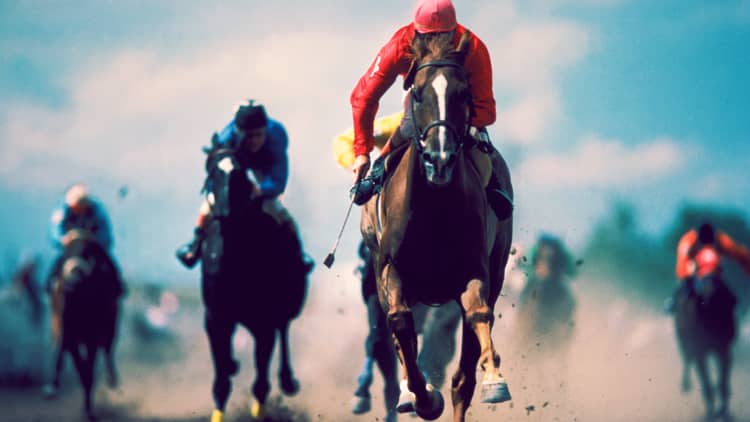
Horse breeding is a huge business — $39 billion and growing.
It used to be common for top-end racehorses to get sold in retirement, but today, many owners are hanging onto horses with the idea that a bigger pay day may be coming down the road through stud fees.
It's a timely and potentially risky investment. The only thing that matters to guarantee a stud fee though, is that he can produce a foal that can stand and can nurse.
Northern Dancer was one of the dominant sires in American pedigrees and was responsible for a boon in the breeding business in the 1980s. "He had more than 22 percent stakes winners from his foals," says Eric Mitchell, Bloodstock editor at BloodHorse. "Typically if a stallion has 10 percent stakes winners, that is considered very successful, and his was over 22 percent." His stud fees were commanding more than $1 million.
Today, Tapit is the most expensive thoroughbred stallion stud in the United States and Canada. He was the leading North American sire for three consecutive years and set progeny records from 2014 -2016, according to BloodHorse. His breeding fee is $300,000 and he breeds about 125 mares a year.
Mitchell said Tapit is a proven commodity, so a mare's owner doesn't mind paying the stud fees knowing that the foals he produces will likely be bought for a sizable sum. In 2017, his yearlings sold for more than $791,000 on average.
Today, Tapit stands at Gainesway in Lexington, Kentucky. Through the 2018 breeding season, he will have generated about $167.8 million during his breeding career.
Breeding horses can be expensive and risky, but if all goes well, the breeder can be rolling in the dough.

